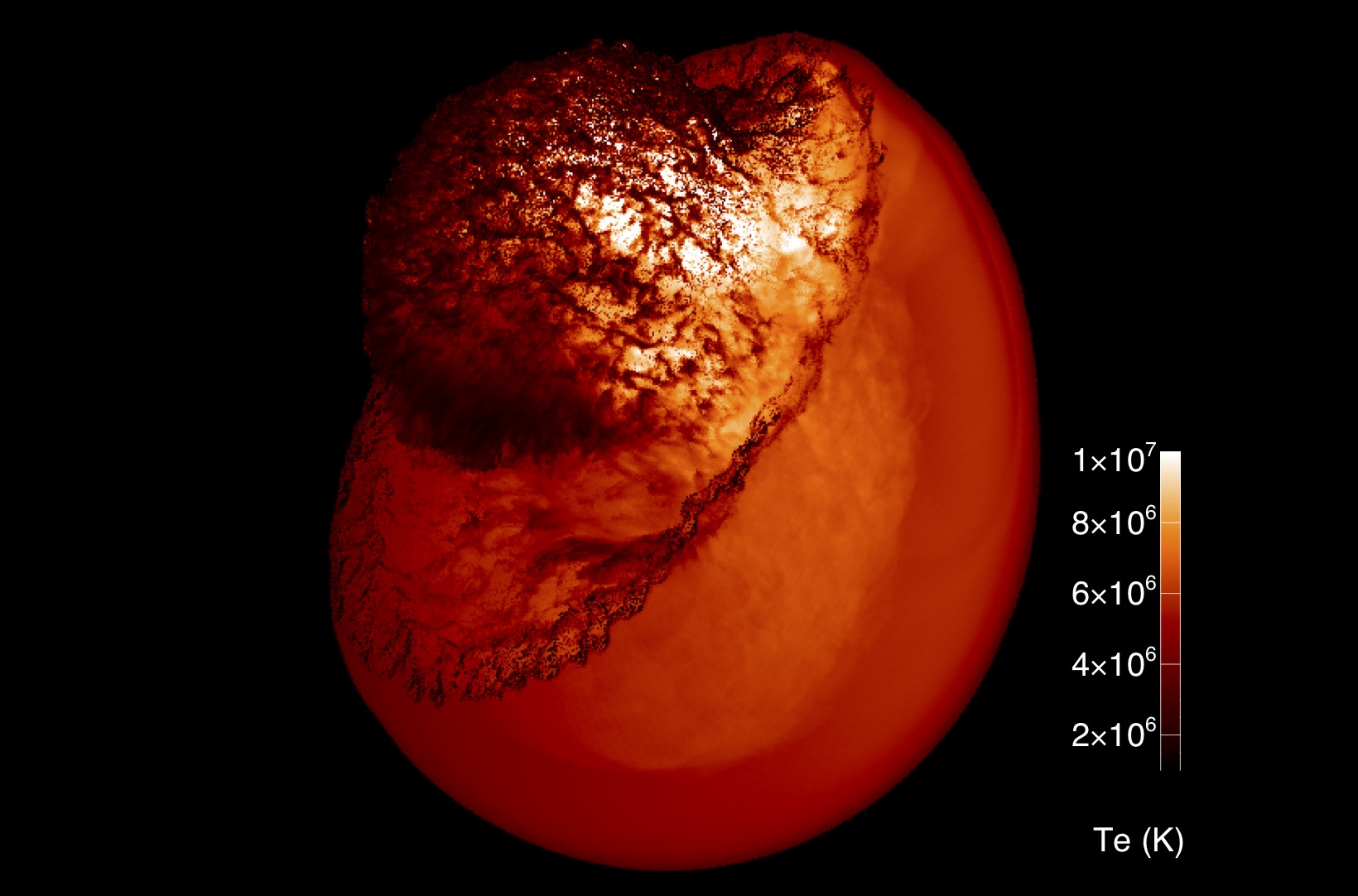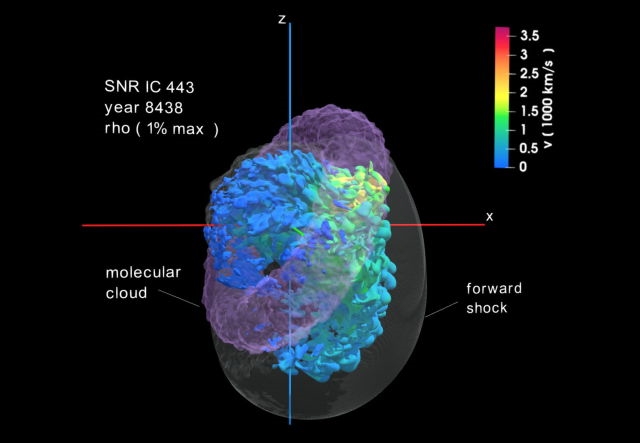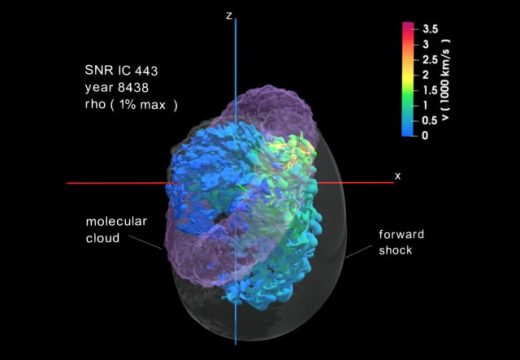Modeling the bizarre remnants of a supernova

The model above shows only the heart of supernova remnant shell, with colors indicating density-weighted average temperature along the line of sight. It doesn’t feature the ethereal-looking atomic and molecular dust and gas clouds you’d see in a typical image of IC 443, which is located about 5,000 light years from Earth. “That’s because it only shows the material with temperatures of the order of million degrees Kelvin (which emits in X-rays), while the surrounding (non-shocked) clouds are much cooler,” lead author Sabina Ustamujic told Engadget by email.
The top image shows a smaller sphere seemingly bursting out of the top half of a larger half shell, so how did IC 443 get this unusual shape, known as a “mixed morphology supernova remnant”? In a model created by the team, the supernova event (likely a Type II supernova) “occurred in a highly inhomogeneous ambient medium, so the leftover neutron star and pulsar wind nebula sit off-center (toward the southeast) surrounded by a half-spherical atomic cloud and donut shaped molecular cloud,” said Ustamujic.

During the first hundred years, the ejecta expanded in a relatively uniform way. About 300 years after the event, however, it hit one side of the molecular donut, which slowed the forward shock wave and created a reverse shock. Meanwhile, the part of the remnant that didn’t hit anything continued normally, while the part that hit the half-sphere atomic cloud slowed down.
Based on the model (shown here in 3D), the researchers estimate the age of the remnant at 8,400 years. In its current state, the bottom half has expanded the most, creating the larger half-sphere shown in the image. The top part, meanwhile, was pinched on the sides by the donut and at the top by the atomic cloud, creating the smaller, offset ball. The hottest parts of the remnant with the most intense X-ray activity happen where the shock wave interacts with materials from the cloud.
The model explains the “very irregular and asymmetric distribution” of the supernova remnant in a “natural way,” according to a paper by the team. On top of providing a cool visualization, it could help future researchers figure out the distribution of chemicals in IC 443 and similar supernova remnants.
Update 12/30/2020 3:00 PM ET: The article has been updated with comments from Sabina Ustamujic, the paper’s lead author.
(33)


